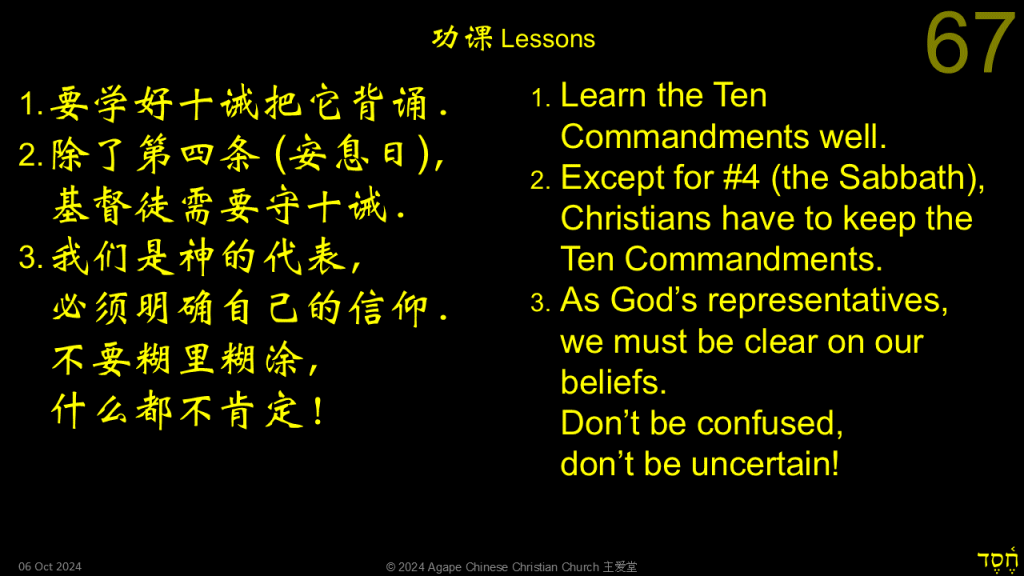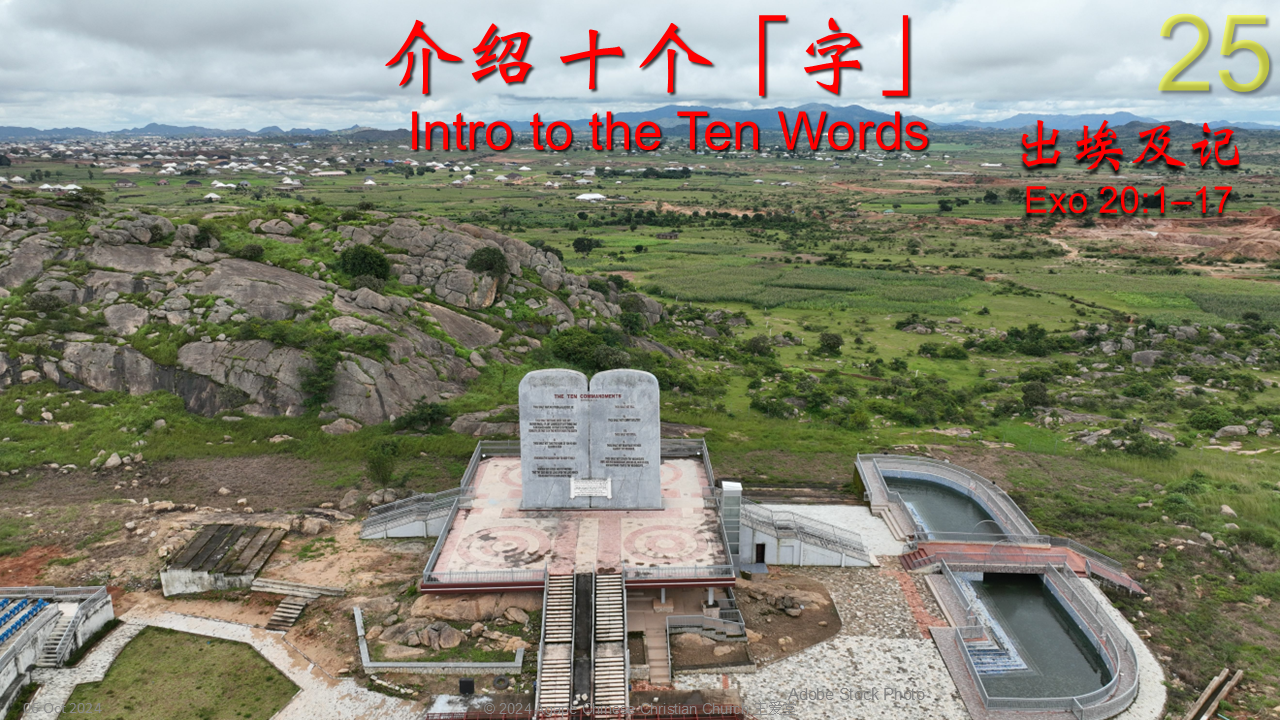介绍 十个「字」 Intro to the Ten Words
出埃及记 Exo 20:1–17
Remember these points
I put these points at the top of my sermon-prep template to remind myself every week:
- Show that main point of passage relates to Jesus and his saving work
- (1 Cor 1:18) A truly gospel-centred message will not be acceptable in a synagogue or mosque
- Did I proclaim the gospel as the headline news of the sermon, rather than as a “by the way…”?
- Unbelievers are called to repent, believe, and be saved
- Believers are encouraged to abandon their old self, renew their minds, put on the new self in Christ
- Preach simple sermons, so that God’s people can see Christ more clearly and love him more dearly
News
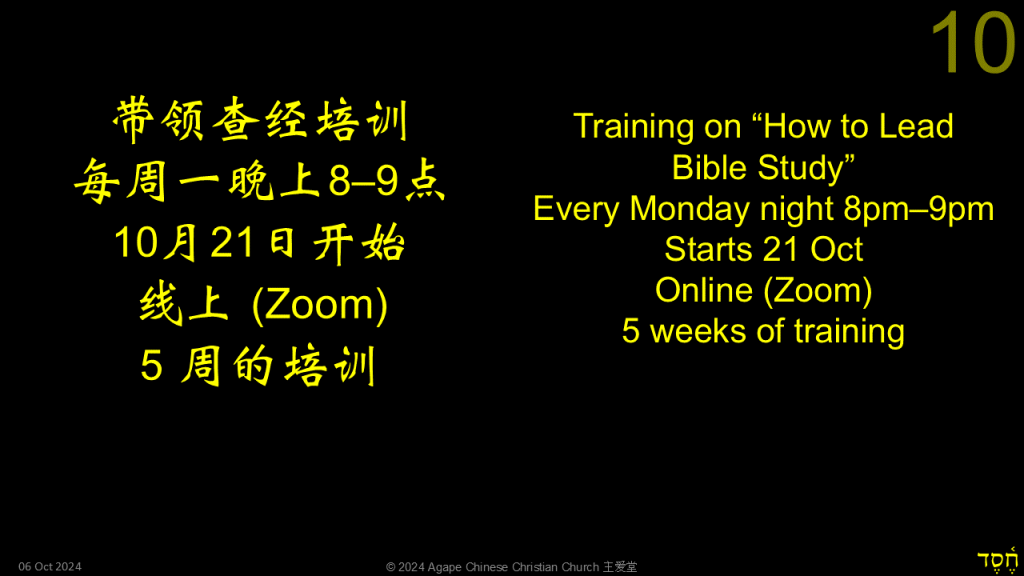

Recap
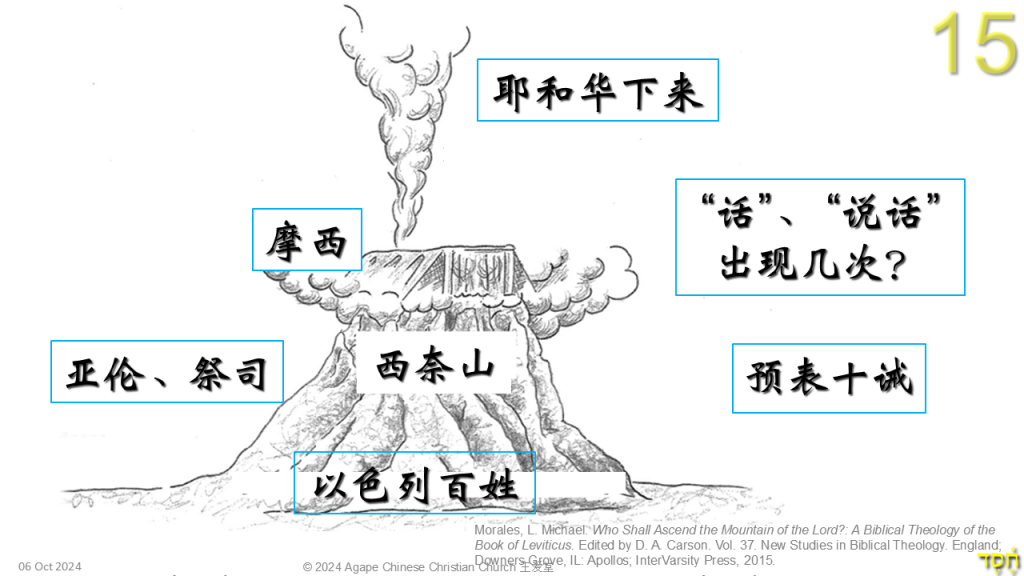
We’re at the foot of Mount Sinai.
They will stay there until Num 10.
The drawing shows the people at the foot of the mountain, Moses and Aaron are able to go up half way, and only Moses can go to the submit to meet God.
What does this remind us of? The layout of the temple, with the submit corresponding to the Holy of Holies, where only the high priest can go in once a year on the Day of Atonement.
Day of Atonement this year is 12 Oct (always ten days after New Year).
The noun of verb “word” or “to talk” appeared 10 times, a signal that the Ten Commandments are coming!
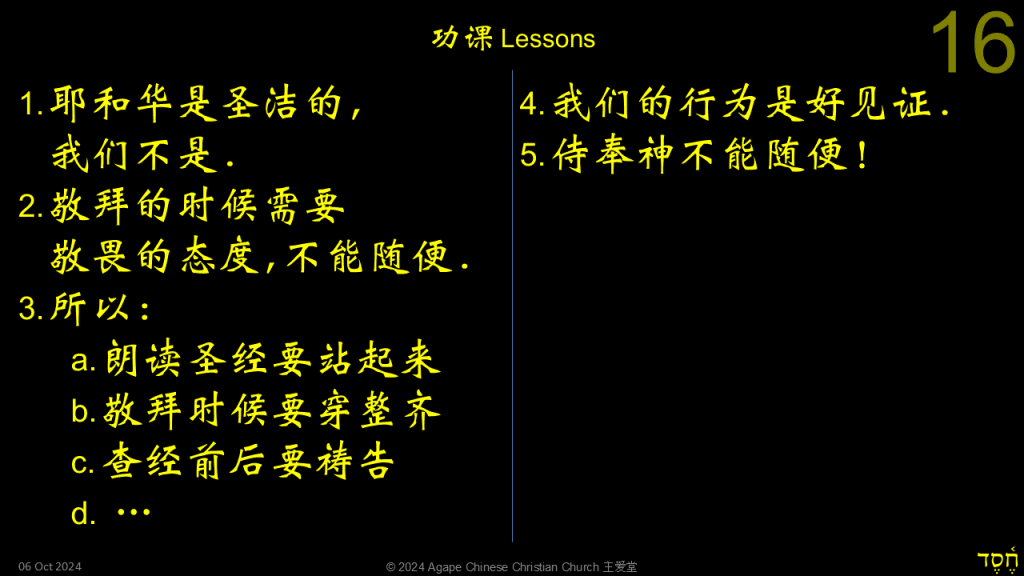
Hook
Heard of the Ten Commandments?

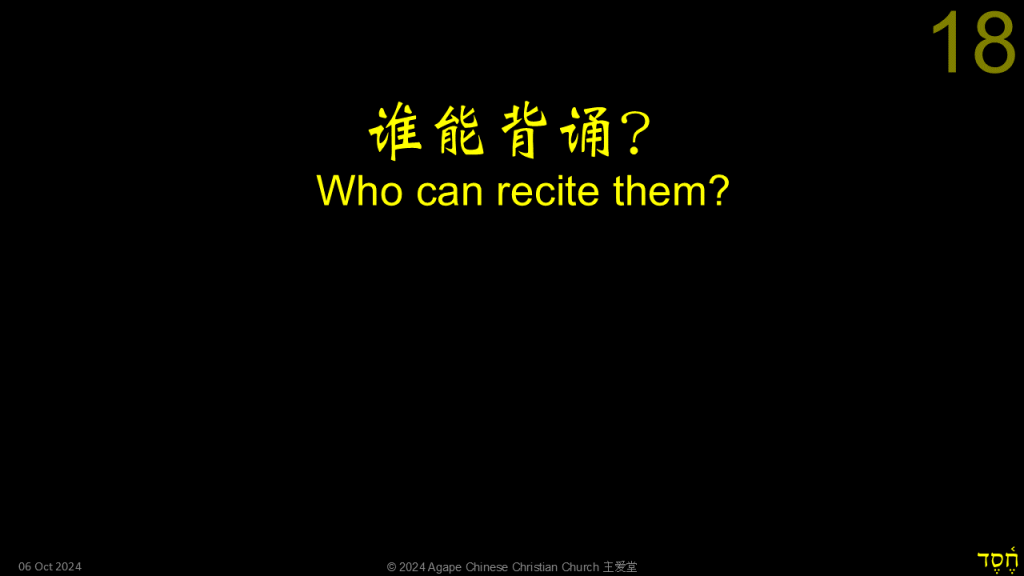
Try to recite them. If you can’t, start memorising them!
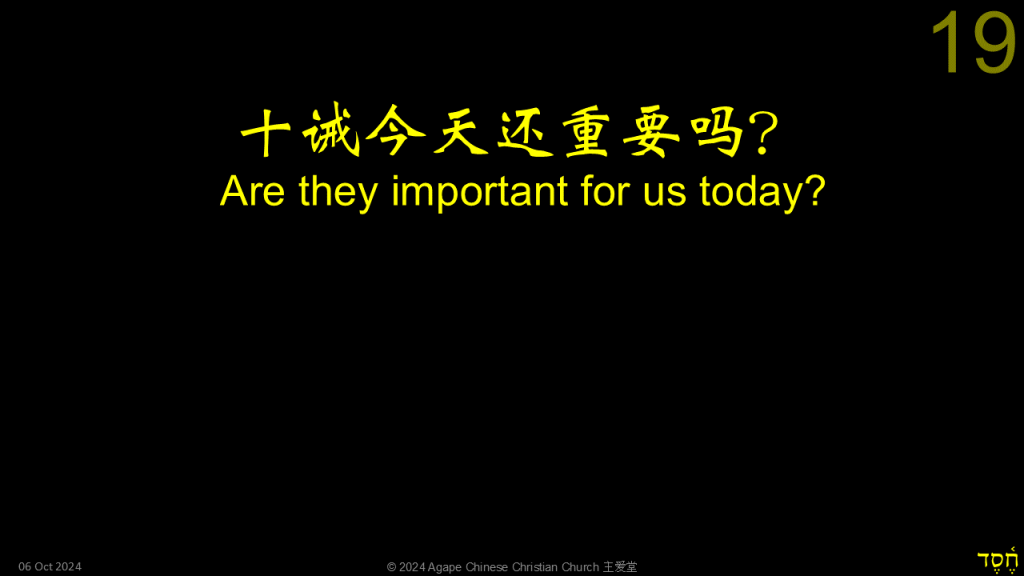
Passage

The picture shows the Ten Commandment Monument in Jos South, Nigeria (Ten Commandments Monument (Nigeria) – Wikipedia).
Nigeria is about 50–50 Christians and Muslims. In recent years, vast majority of worldwide Christians killed because of their faith in Jesus was from Nigeria (some stats say of 16 Christians murdered daily worldwide, 14 were from Nigeria).

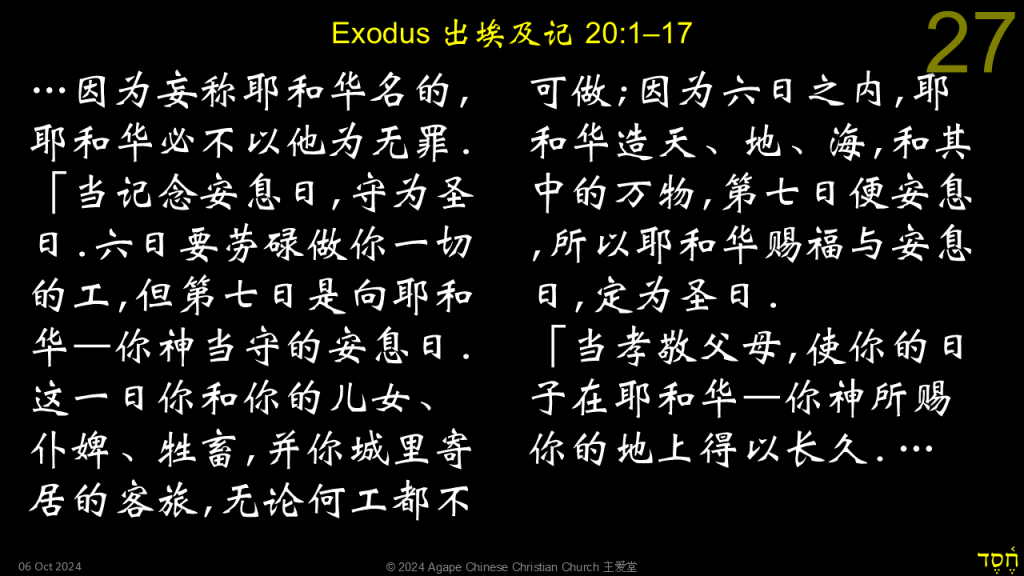
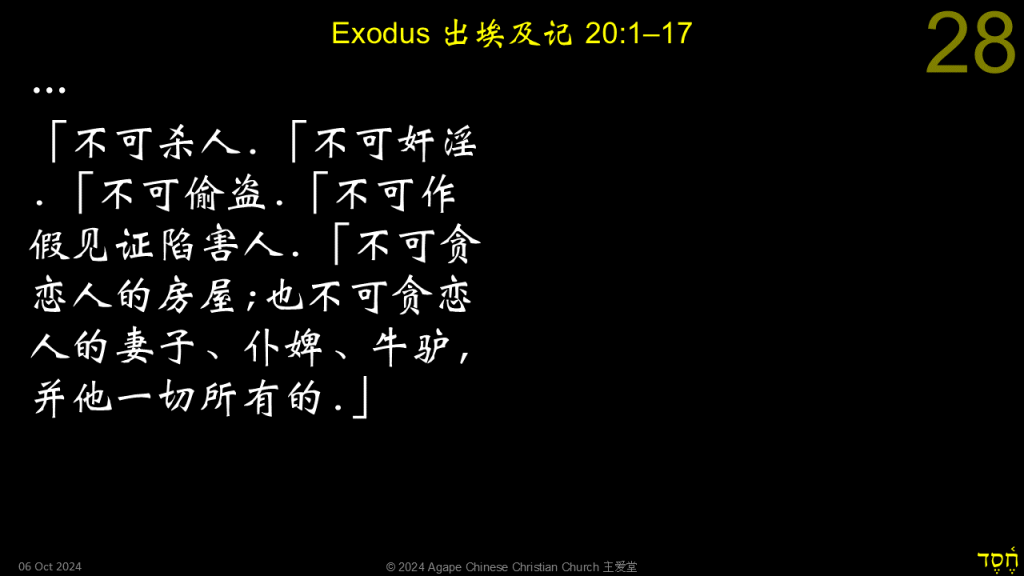
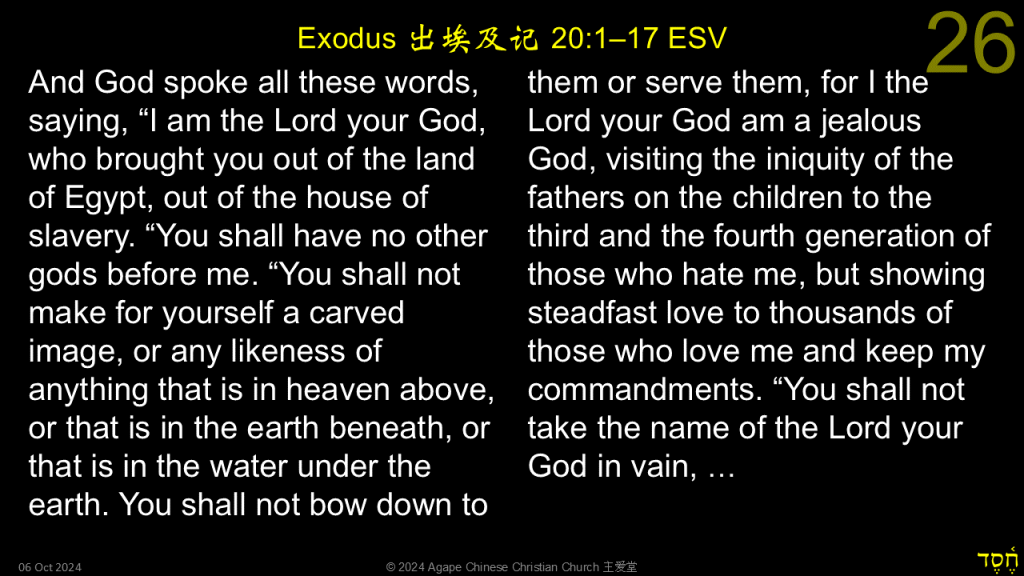
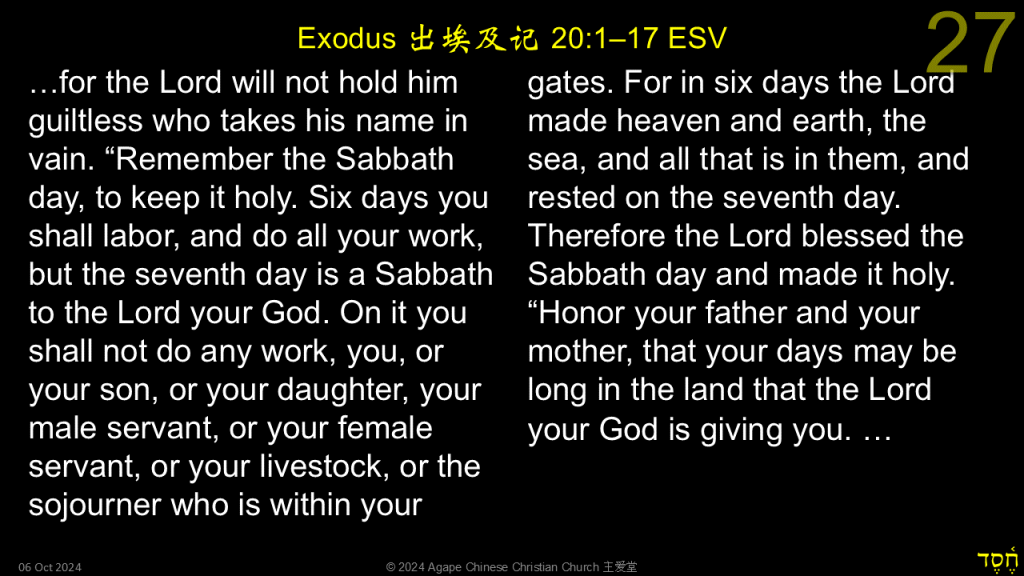
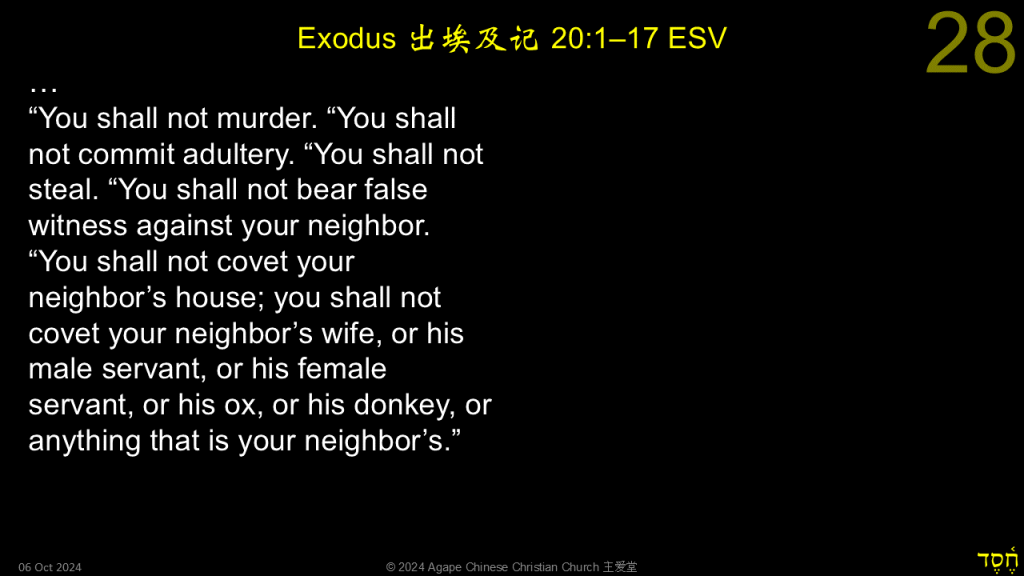
Outline

Section 1 十个「字」Ten Words
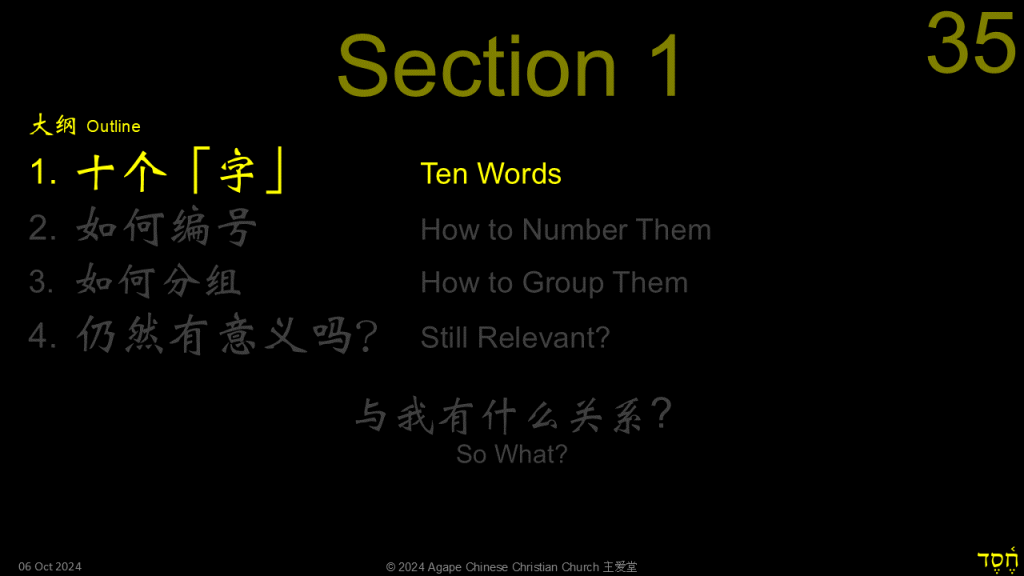
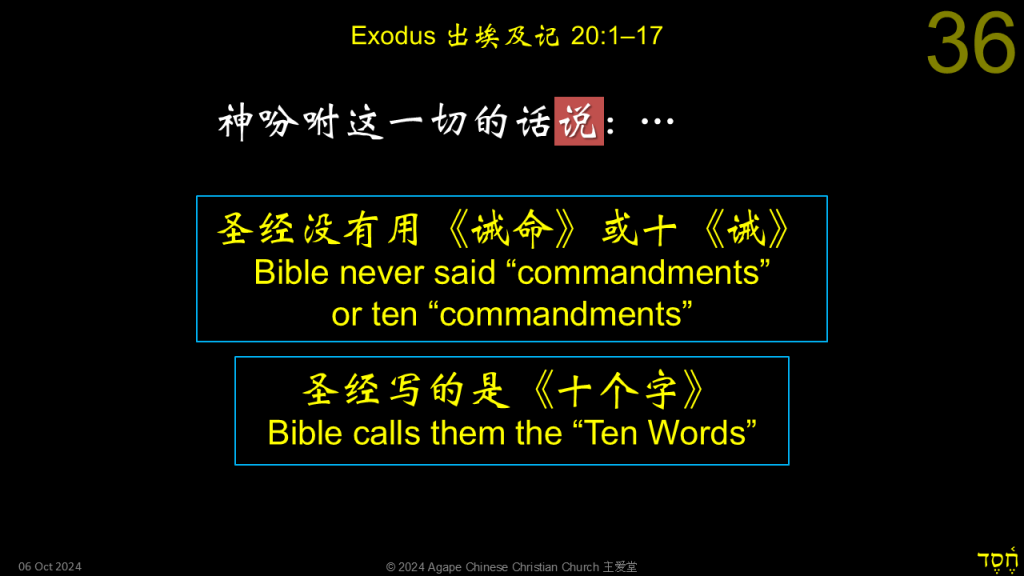
Most every translation says “Ten Commandments.”
The word “Commandment” was never used. The Hebrew always says “Word.”
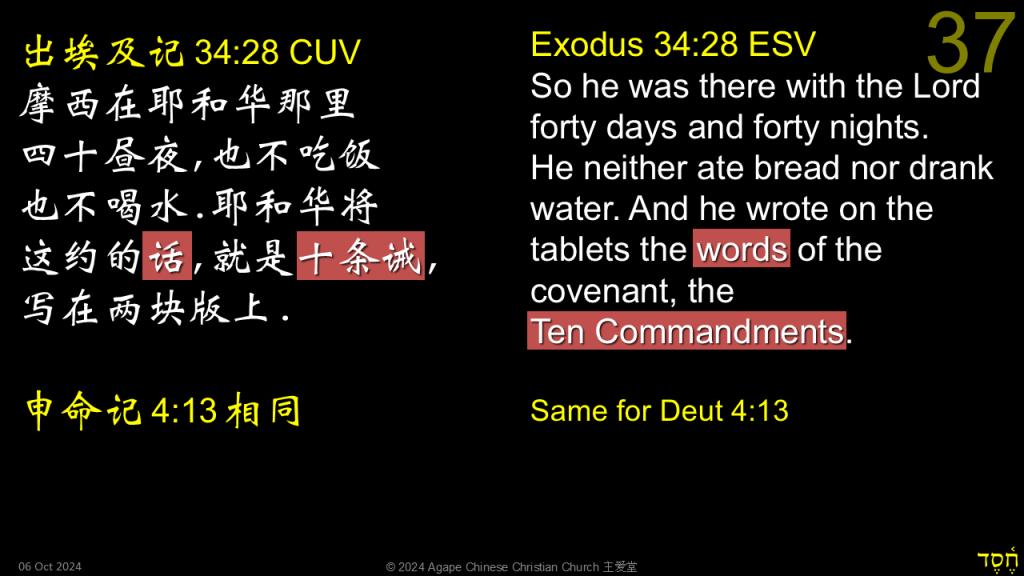

These are the main places where the Ten Commandments are listed. There’s another in Exo 34, but…
Section 2 如何编号 How to Number Them
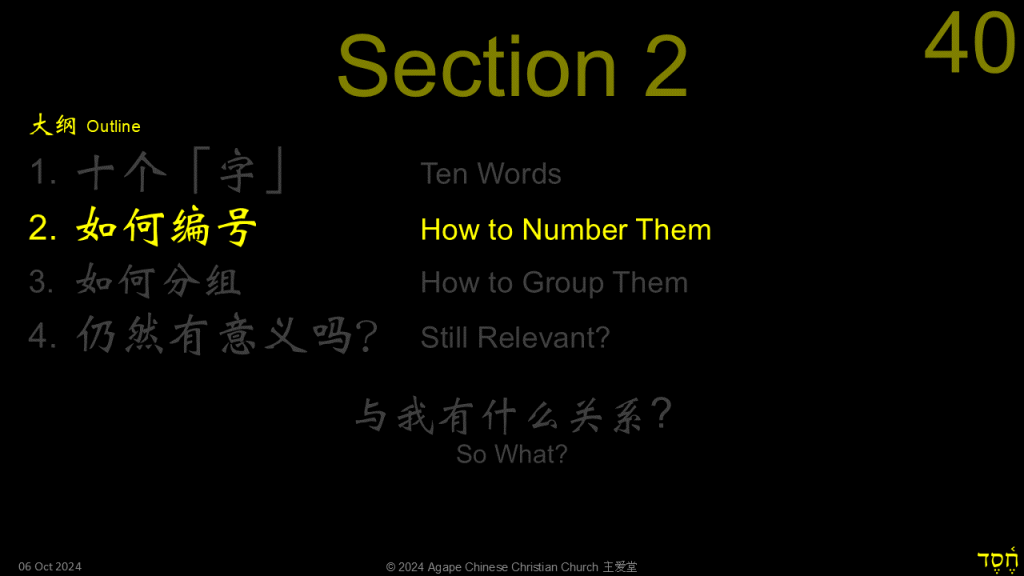
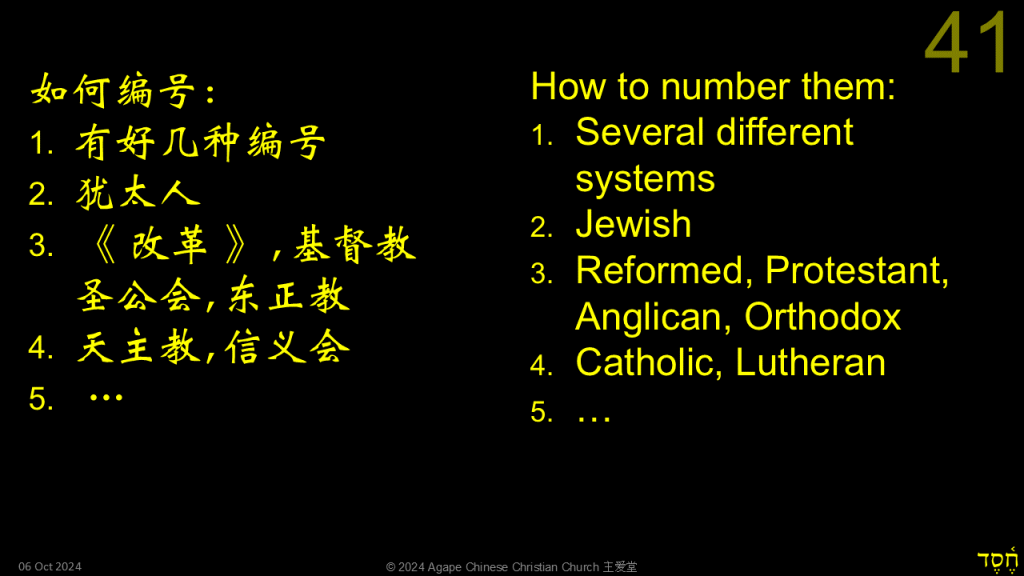
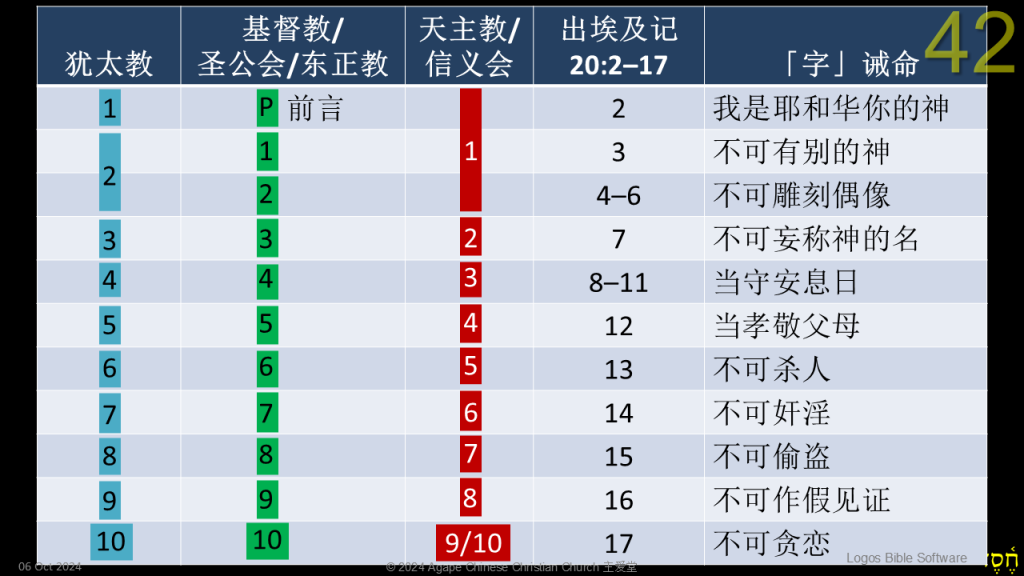
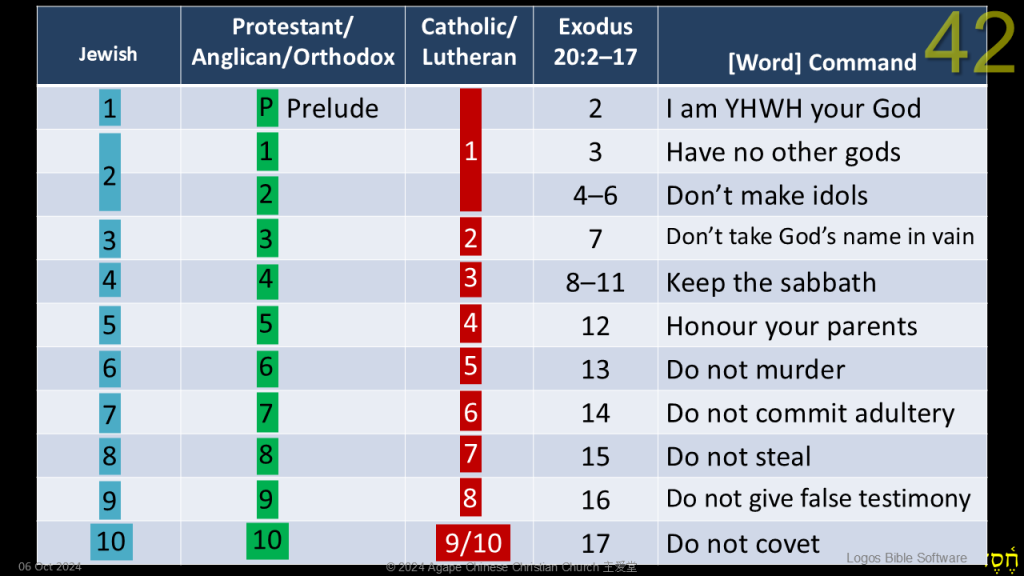
I don’t agree with the Catholic/Lutheran numbering system. I just find it a bit strange. But there are reasons that they numbered it that way.
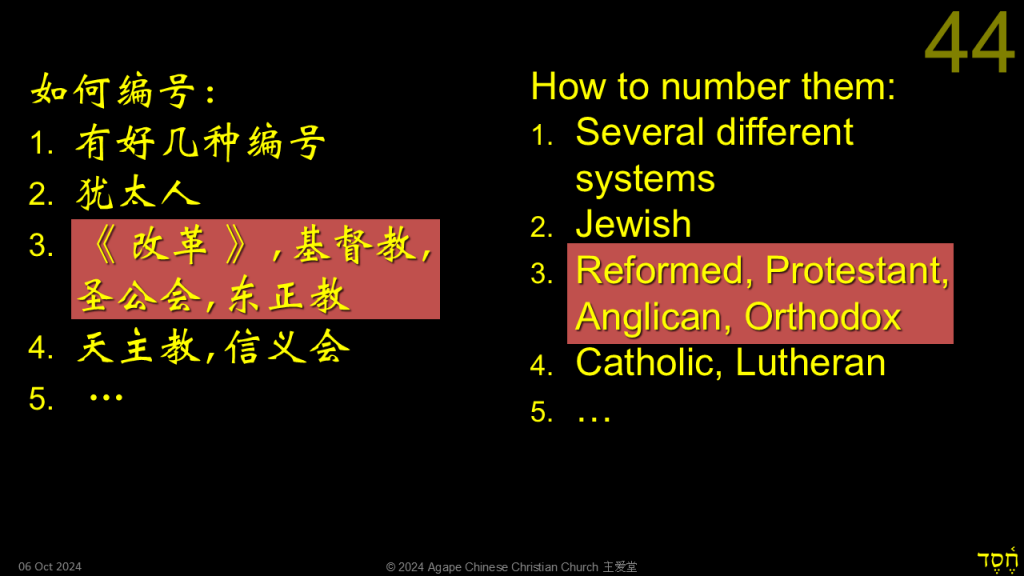
From now on, we’ll go with the Reformed/Protestant numbering system.
Section 3 如何分组 How to Group Them
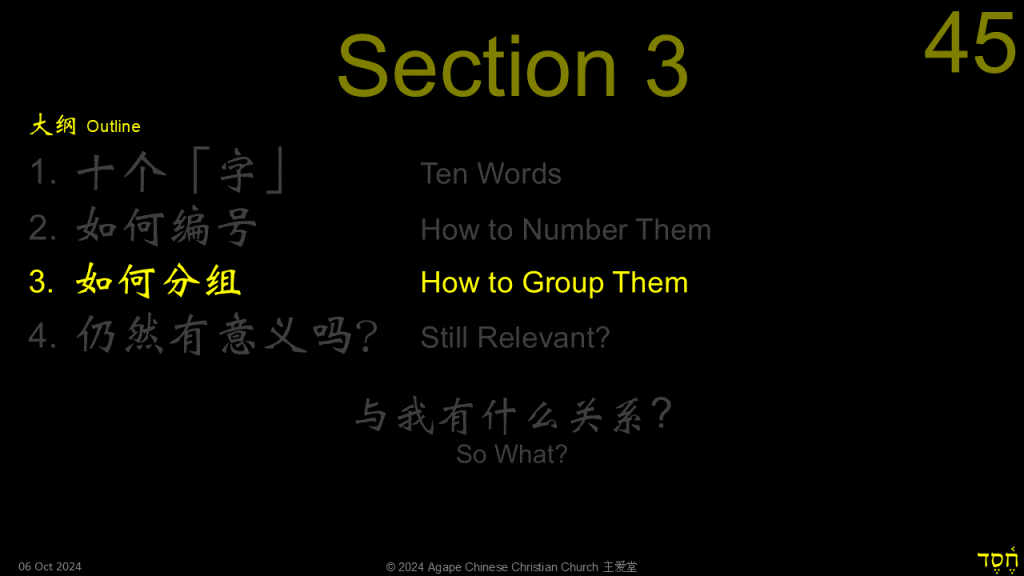
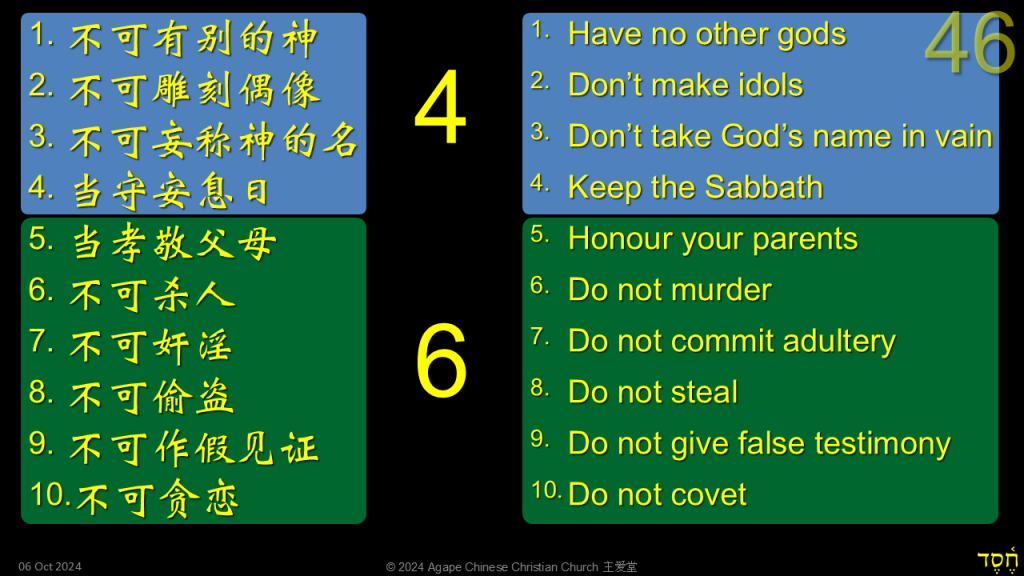
Two popular ways of grouping them: 4–6 and 5–5.
Both have their reasons.
The 4 –6 grouping says 1 to 4 are how we are to relate to God, and 5 to 10 are how we are to relate to other people.

The 5–5 grouping uses the same principle: relating to God and to people.
But, in the 5–5 grouping, #5 is seen as relating to God in the sense of parents being our creator (just like God is our Creator).
It doesn’t matter how you group them. There are other ways as well…
Section 4 仍然有意义吗?Still Relevant?

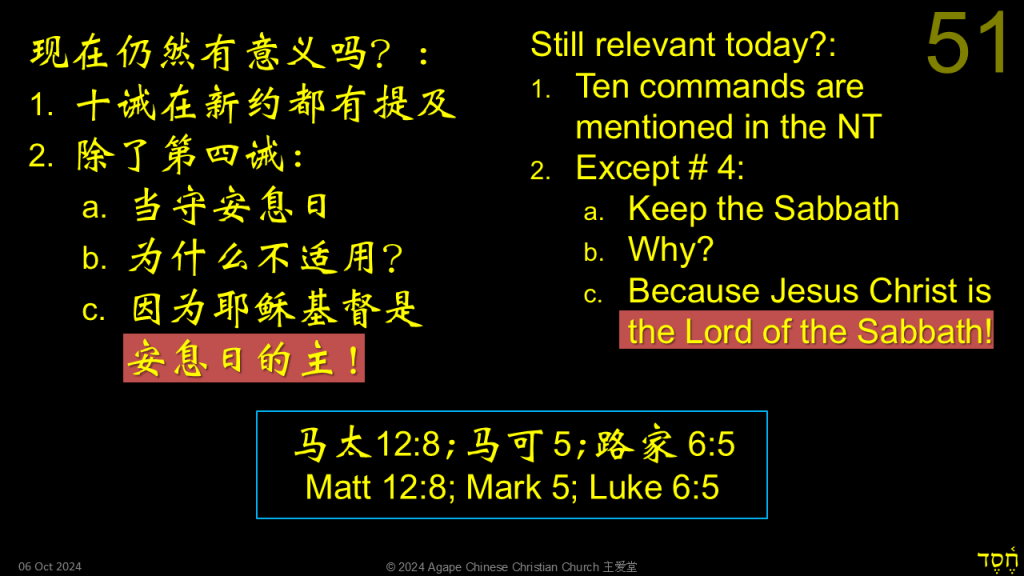
The 3 gospel passages show where Jesus said he’s the Lord of the Sabbath.
As the Lord of the Sabbath, he’s greater than the Sabbath. I.e., he can do whatever he wants with the Sabbath.
He came to give us rest (from sin), and thus fulfilled the “rest” that’s in #4.
So for us (after Jesus and the cross), we no longer have to keep the Sabbath.
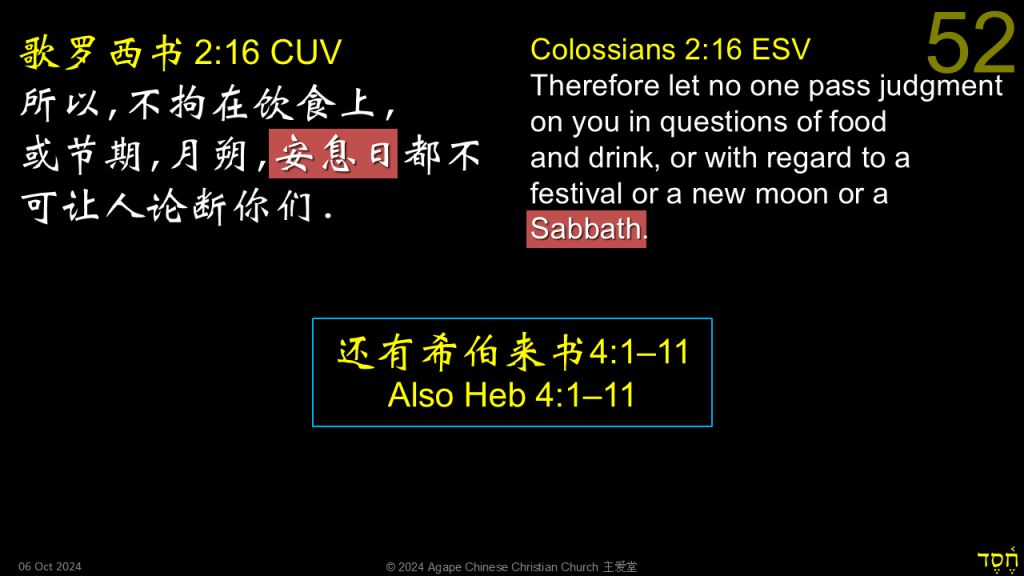
There are actually passages in the NT that tell us we don’t have to keep the Sabbath: Col 2:16; Heb 4:1–11.

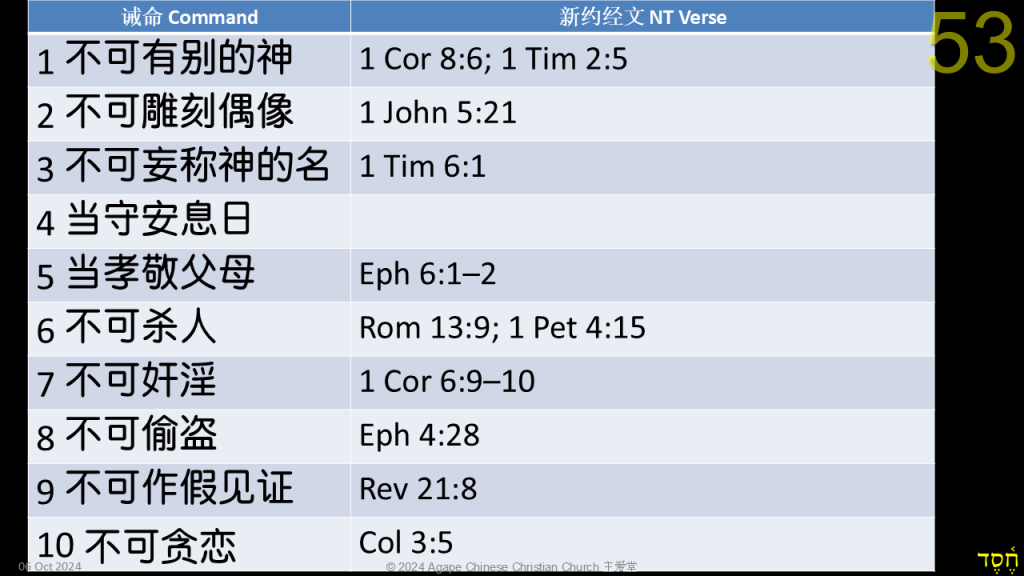
As for the other 9 commandments, they’re all repeated (affirmed) in the NT.
This is why we continue to keep these commandments. They are still relevant to us today!
与我有什么关系? So What?

